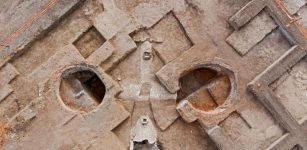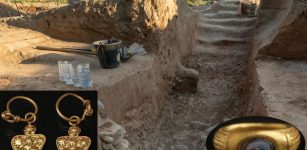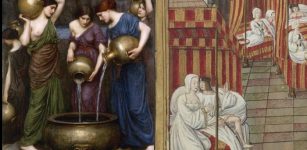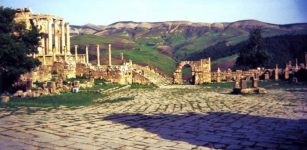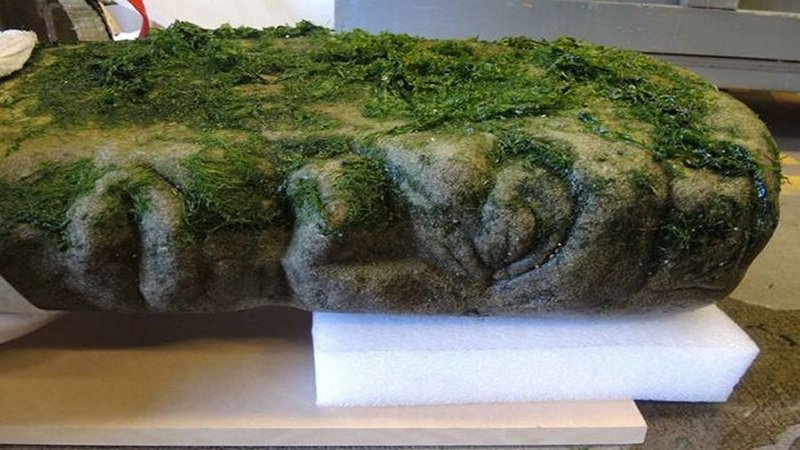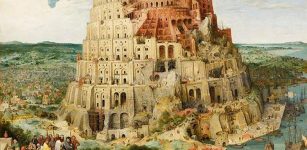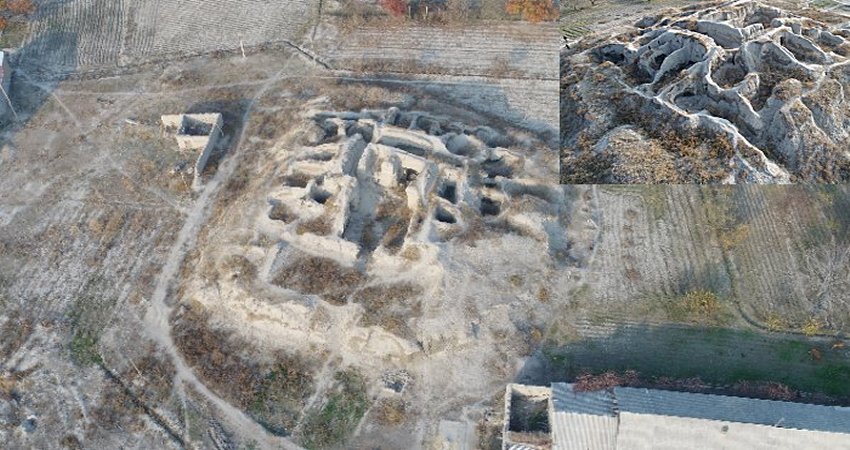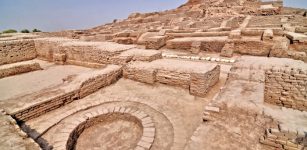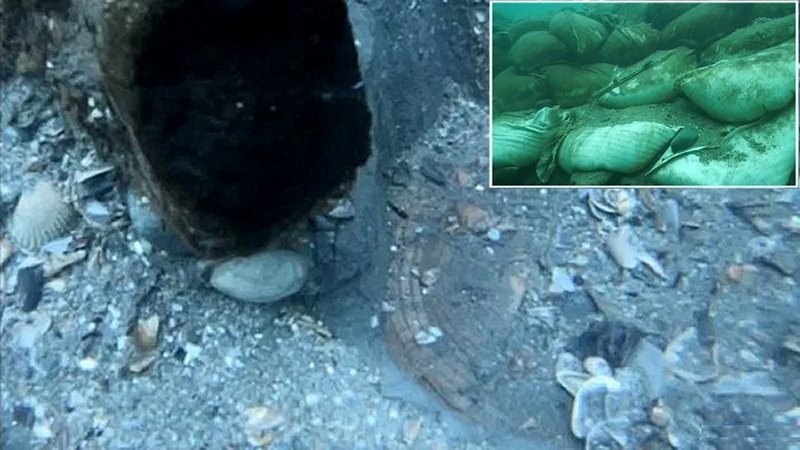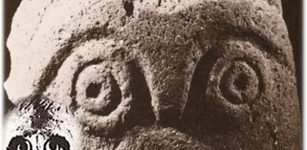Unusual Tukuturi Statue On Easter Island Remains An Unexplained Mystery
MessageToEagle.com – Easter Island keeps many ancient secrets.
One of them is a strange “kneeling moai” or simply “Tukuturi” figure that was found on Easter Island by archaeologist Thor Heyerdahl’s team in 1955. Tukuturi was discovered on the Rano Raraku quarry, but strangely, no other statues accompanied this being.
Why is the figure’s location away from other sculptures?
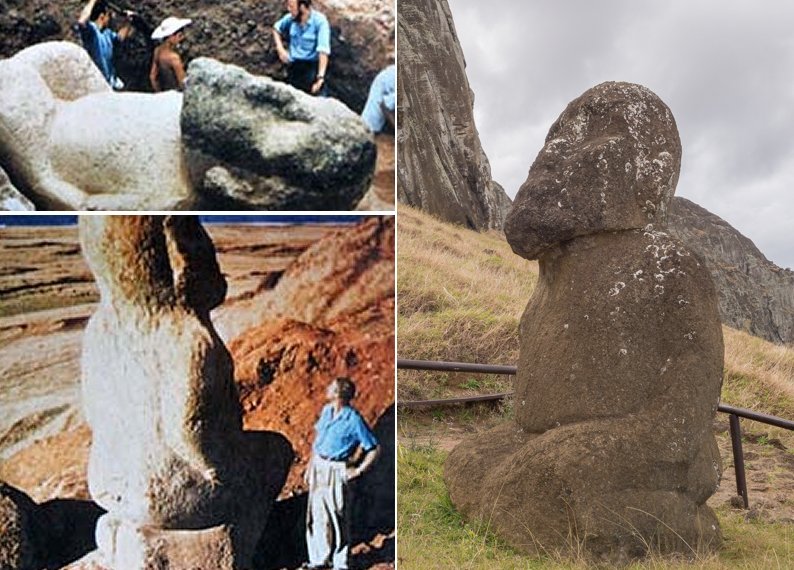
One legend says that this is a depiction of a famous moai sculpture erected to watch over future generations of the island’s craftsmen.
This figure differs much from other traditional statues on the island.
Unlike the other stone colossi, Tukuturi’s facial characteristics, are rounded, much more human-like when compared to the traditional, straight rectangular heads of the other moai.
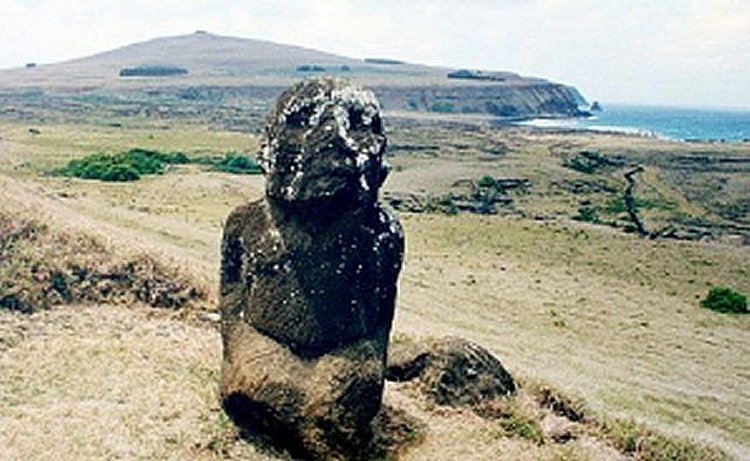
If you look from the side, you could even see that this being has a small beard. But that’s not all. The figure has also well-defined legs and it is kneeling with its hands resting on the knees.
Were traditional moai created before Tukuturi or was he, their predecessor?
Some researchers argue that it may belong to a later period. But the most common idea is that it was one of the first sculptures to be made – an early precursor of the traditional moai. However, it wasn’t transported but left in the quarry because it was either damaged or never intended to be erected on a platform.
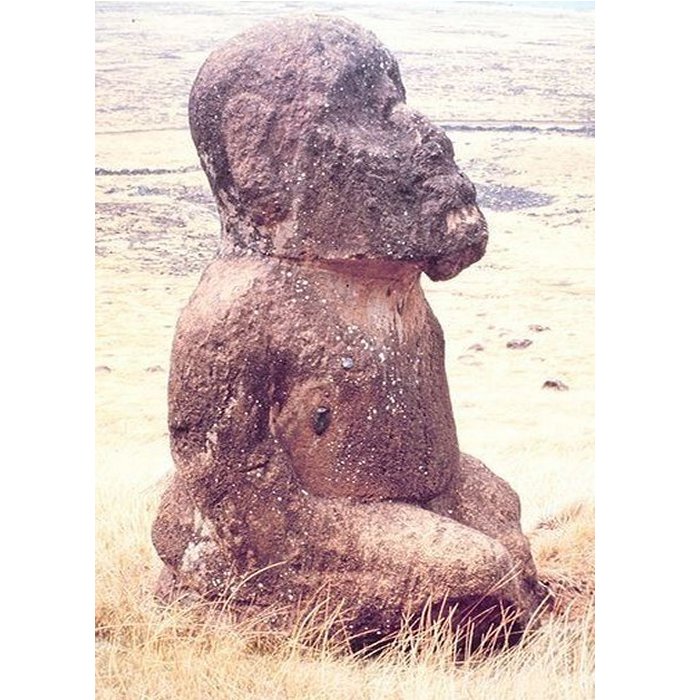
If you look from the side, you could even see that this being has a small beard.
Perhaps we have to ask whether the mysterious kneeling Tukuturi really is “moai” figure, in the first place.
See also:
Rapamycin: Mysterious Easter Island Bacteria Could Be The Key To Immortality
Easter Island’s Statues Reveal Bodies Covered With Unknown Ancient Petroglyphs
Mystery Of Easter Island Deepens: Warfare Did Not End The Rapa Nui Civilization
More Fascinating Ancient Places And Civilizations
The statue’s kneeling position catches our attention. Is the kneeling position a way to show admiration and respect toward his gods or is he perhaps, begging for mercy or forgiveness?
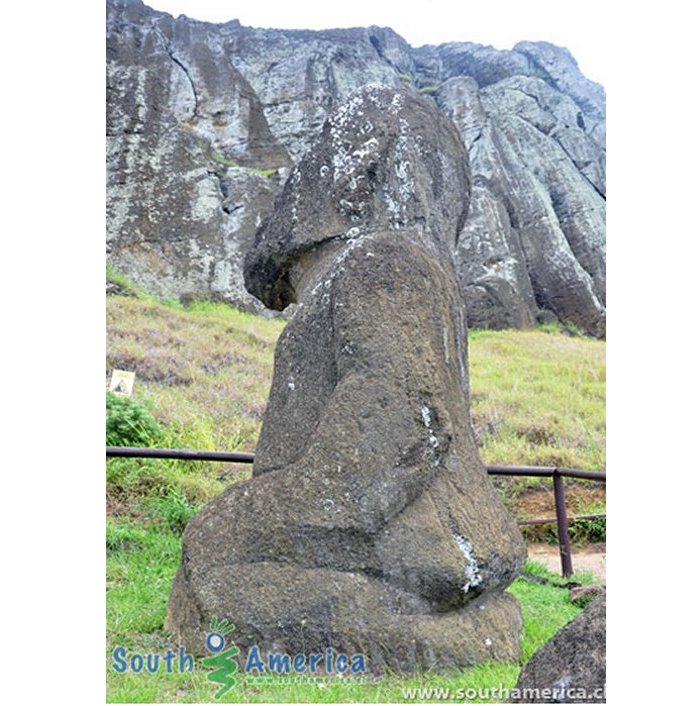
Father Sebastian Englert (1888 – 1969), a Capuchin Franciscan friar, Roman Catholic priest, missionary, linguist and ethnologist from Germany. He is known for his pioneering work on Easter Island.
He said that
“masters who had built the beautiful Inca walls of the first period, were not also the creator of the mighty half figures who have made Easter Island so famous. They created a series of simpler statues [like Tukuturi] with a rounded head and staring eyes, sometimes red tuff and sometimes of black basalt, but also already used the yellow-gray volcanic rock, which was so popular in the next period…” (“Aku-.Aku, T. Heyerdahl).
Copyright © MessageToEagle.com All rights reserved. This material may not be published, broadcast, rewritten or redistributed in whole or part without the express written permission of MessageToEagle.com
Expand for referencessource:
Aku-.Aku, T. Heyerdahl

